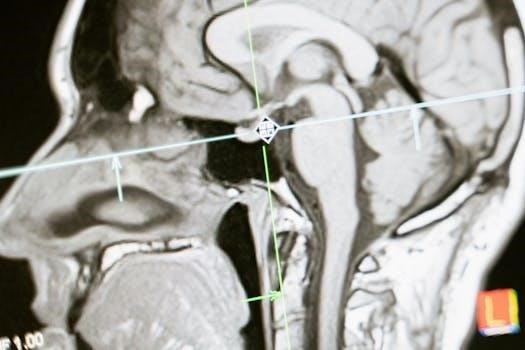This section focuses on providing resources for testing knowledge of polynomial multiplication․ Here you’ll find quizzes, practice problems, and worksheets designed to assess and improve your skills․ These resources offer a range of difficulty levels, from basic to advanced, to help you master this key concept․

What is a Polynomial?
A polynomial is a mathematical expression consisting of variables and coefficients, combined using addition, subtraction, and multiplication, with non-negative integer exponents․ These expressions can range from simple terms like ‘5x’ to complex combinations such as ‘3x2 + 2x ー 7’․ Polynomials do not include division by variables or negative exponents․ The individual terms within a polynomial are called monomials, and they can be constants, variables, or a product of both․ Understanding the structure of polynomials is crucial before attempting to multiply them, as it allows for the proper application of multiplication rules․ Polynomials are fundamental in algebra and have a wide variety of applications, from modelling curves in graphs to solving equations․ They are categorized by the number of terms they contain, such as monomials (one term), binomials (two terms), and trinomials (three terms), each with their own methods of multiplication․ Being able to recognize different types of polynomials is an essential skill for more advanced algebraic operations․
Methods for Multiplying Polynomials
Several methods can be used to multiply polynomials, each with its own advantages depending on the complexity of the expressions involved․ The most common methods include the distributive property, the FOIL method, and the box method․ The distributive property involves multiplying each term of one polynomial by every term in the other․ The FOIL method, which stands for First, Outer, Inner, Last, is a special case of the distributive property used specifically for multiplying two binomials․ The box method, also known as the grid method, is a visual approach that helps organize the multiplication process, particularly useful for larger polynomials with multiple terms․ All these methods rely on the fundamental principle of multiplying each term of one polynomial with every term of the other and then combining like terms․ Choosing the appropriate method will depend on the specific situation and personal preference, but understanding all the methods ensures you can confidently multiply any type of polynomials․ Mastering these techniques is essential for higher levels of algebra and calculus․
The FOIL Method
The FOIL method is a mnemonic device used specifically for multiplying two binomials․ It stands for First, Outer, Inner, Last, representing the order in which you multiply the terms․ ‘First’ refers to multiplying the first terms of each binomial․ ‘Outer’ means multiplying the outermost terms of the two binomials․ ‘Inner’ refers to multiplying the two innermost terms, and ‘Last’ means multiplying the last terms of each binomial․ After performing these four multiplications, you combine any like terms to simplify the result․ The FOIL method is a shortcut of the distributive property, providing a structured way to ensure all terms are multiplied correctly․ While it is an efficient technique for binomial multiplication, it is important to remember that it is a specific application of the distributive property․ While effective for multiplying two binomials, it does not directly apply to multiplying polynomials with three or more terms․ Therefore, it’s crucial to understand that the FOIL method is an effective tool, but it is not the only method available for multiplying polynomials․ Understanding the underlying principle of distribution is essential․
Distributive Property in Multiplication
The distributive property is a fundamental concept in mathematics, and it is particularly crucial when multiplying polynomials․ This property states that to multiply a sum by a number, you must multiply each addend by that number and then add the results․ In the context of polynomials, this means that each term of one polynomial must be multiplied by each term of the other polynomial․ This process ensures that every possible product of terms is accounted for․ When multiplying a monomial by a polynomial, you apply the distributive property by multiplying the monomial by each term within the polynomial․ Similarly, when multiplying two polynomials, you distribute each term of one polynomial over every term of the other polynomial․ This can be done systematically by selecting a term from one polynomial and multiplying it by every term of the other and repeating this process for all terms․ The distributive property is a versatile method applicable to polynomials of any size, and it serves as the foundation for other methods like FOIL․ Understanding the distributive property is essential for mastering polynomial multiplication․

Box Method for Multiplication
The box method, also known as the grid method, offers a visually structured approach to multiplying polynomials, especially when dealing with larger expressions․ This method organizes terms in a grid, making it less prone to errors compared to the distributive property alone․ To use the box method, you create a grid or a box, where the rows and columns correspond to the terms of each polynomial being multiplied․ For example, if multiplying a binomial by a trinomial, you would create a 2×3 grid․ Each cell of the grid is then filled with the product of the corresponding row and column terms․ Once the grid is complete, you add the products within the boxes, combining any like terms to obtain the final polynomial․ This method is particularly helpful when dealing with binomials or higher degree polynomials․ It helps keep track of each multiplication step and is less likely to miss terms․ The box method is a fantastic alternative to the distributive property, especially for those who prefer a more visual organization․ It also helps with keeping track of each term as you multiply, making it a good method to use during exams․
Practice Problems and Worksheets
To truly master multiplying polynomials, consistent practice is essential․ This section provides access to a variety of practice problems and worksheets, designed to help you hone your skills․ These resources range from basic exercises involving monomials and binomials to more complex problems with trinomials and beyond․ The worksheets often include a mix of different problem types, encouraging you to apply various multiplication methods such as FOIL, distributive property, and the box method․ Some worksheets also provide step-by-step solutions, allowing you to check your work and identify areas where you might need additional practice․ Additionally, these problems may be presented in different formats, which include simple equations and word problems that help you understand how polynomial multiplication is used in real-world scenarios․ The goal of these practice materials is to give you the confidence and proficiency required to tackle any polynomial multiplication problem, on exams and in other math courses․ Remember, the more you practice, the more comfortable and accurate you will become with this key algebraic skill․ You should also try to find worksheets that offer answer keys․

Online Quizzes for Testing Knowledge

Online quizzes offer a dynamic and interactive way to assess your understanding of multiplying polynomials․ These quizzes provide immediate feedback, allowing you to identify your strengths and weaknesses in real-time․ Many platforms offer a variety of quizzes, ranging from simple multiple-choice questions to more complex problems requiring you to input your answers․ These quizzes often cover different aspects of polynomial multiplication, including the FOIL method, the distributive property, and the box method․ You can use them to test your understanding of multiplying binomials, trinomials, and polynomials with more than three terms․ Some quizzes will include a timer, to help simulate testing conditions․ This can help you work more efficiently and quickly․ Many quizzes allow you to repeat them multiple times, providing an opportunity to improve your score and solidify your understanding of the concepts․ You can also find quizzes that offer explanations for each question, which helps you learn from your mistakes․ Online quizzes are a great resource to complement your textbook learning and worksheets․
Common Mistakes in Multiplying Polynomials
Multiplying polynomials, while a fundamental algebraic skill, often presents opportunities for errors․ One frequent mistake is incorrectly applying the distributive property, especially when dealing with multiple terms․ Students might forget to multiply every term in one polynomial by every term in the other, leading to incomplete products․ Another common pitfall is mishandling exponents; when multiplying terms with variables, the exponents should be added, but this rule is often overlooked or misapplied․ Sign errors also tend to creep in, especially when dealing with negative coefficients or terms․ Forgetting to combine like terms after performing the multiplication is another frequent mistake․ It’s also common to improperly use the FOIL method, especially when dealing with polynomials that are not binomials․ When using the box method, errors can occur if the grid is not set up correctly or if the individual products are not properly combined․ A lack of practice in each different method can lead to these mistakes․ Careful attention to detail and deliberate practice can significantly reduce errors․
Applications of Polynomial Multiplication
Polynomial multiplication isn’t just an abstract math concept; it has numerous practical applications in various fields․ In geometry, for instance, multiplying polynomials is essential for calculating the area and volume of complex shapes․ If the dimensions of a rectangle or a cuboid are expressed as polynomials, their area or volume can be found through polynomial multiplication․ In physics, polynomial multiplication can be used in modeling the trajectory of projectiles, where position, velocity, and acceleration are often represented by polynomial expressions․ In computer graphics and game development, polynomial multiplication is used in complex calculations to render smooth surfaces and realistic motion․ Furthermore, in economics, polynomial functions are sometimes used to model cost and revenue, and multiplying these functions can provide insights into total profit․ In signal processing, polynomial multiplication plays a role in digital filtering and system analysis․ Even in everyday life, understanding polynomial multiplication can help with tasks like calculating compound interest or modeling the growth of populations․ The ability to multiply polynomials is a vital tool in any field that relies on mathematical modeling․
Advanced Polynomial Multiplication
Moving beyond basic polynomial multiplication, advanced techniques involve more complex scenarios, such as multiplying polynomials with multiple variables and higher degrees․ These situations often require a combination of the distributive property and careful organization to avoid errors․ One advanced topic includes multiplying polynomials with fractional or negative exponents, which introduces additional considerations when applying the rules of exponents․ Another area involves working with polynomials within other algebraic structures, like function composition or transformations of polynomials․ Additionally, understanding polynomial multiplication is foundational for more advanced mathematical concepts such as calculus, where multiplying polynomials is used to find derivatives and integrals․ The concept is also crucial in abstract algebra and number theory․ Furthermore, advanced polynomial multiplication may involve complex numbers, requiring an understanding of imaginary units and their properties during multiplication․ These advanced techniques build upon the foundational skills learned in basic polynomial multiplication, demanding precision, careful attention to detail, and a deep understanding of algebraic principles․ Mastering these areas opens doors to more complex mathematical modeling and analysis․
